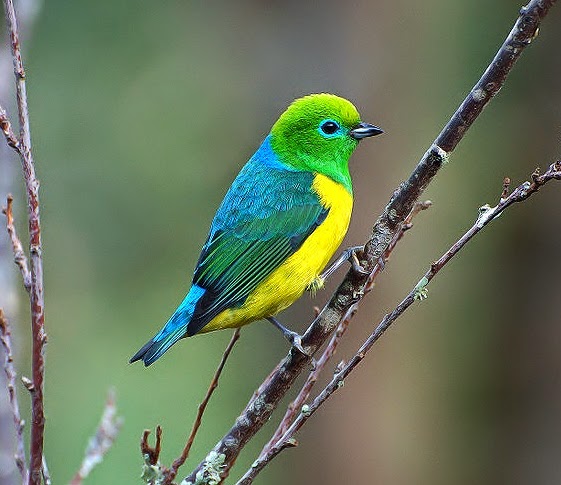A stout bespeckled little bird is only enhanced by a beautiful mosaic of contrasting lime green, yellow, and blue!
Meet The Blue-naped Chlorophonia

The blue-naped chlorophonia (Chlorophonia cyanea) male has a green hood, throat, and wings with blue on the back of the neck that extends toward the mantle and rump. The underparts are yellow.
The female is a dull version of the male with the blue restricted to only the back of the neck.

Both sexes have a distinctive blue eyering.
These birds are found in southern Venezuela, south-western Guyana, and marginally into northern Brazil. A second population is located along the eastern slopes of the Andes, from Venezuela to central Bolivia. The third population is found in the Atlantic forests of southern and south-eastern Brazil, and also into southern Paraguay, and marginally into northern Argentina.

The blue-naped chlorophonia is found in moist tropical forests, rural gardens, and plantations. They are present from sea level up to an altitude of 2.100 m.
Blue-naped Chlorophonia mainly eats berries and insect larvae, but also small leaves and nectar.

Blue-naped chlorophonia breeds from December through to July. The nest is a globular structure with side entrances, made of moss and rootlets, usually placed in a bank with overhanging vegetation or within a bromeliad, about 1 m above the ground. The female lays 2-3 whitish eggs within covered in reddish-brown speckles, which she incubates alone for 17-20 days. The chicks are fed by both parents and fledge after 20-21 days after hatching.
Due to this species’ very large breeding range, it is described as common and regarded as of Least Concern on the ICUN Red List.